
“Over 10 Years” is a series focusing on KINTO’s collections that have been around for more than a decade, bringing you the story behind their creation. For this edition we sat down with product designer Fumie Shibata and KINTO’s Sayaka Nishinami, who worked on the development of UNITEA which was first introduced in 2006. We take a look back on the beginnings and the evolution of the collection.
Birth of UNITEA
—Can you tell us about how the development of UNITEA began?
Sayaka: KINTO used to import tableware from Europe, and this enabled us to see the Japanese market from different angles. We saw that making tea in ceramic teapots were the norm in Japan, while glass teaware was predominantly foreign with elegant and decorative designs. The starting point of our journey was the idea that we wanted to create a teapot that would suit the increasingly simple and casual lifestyle of our time.
Sayaka: KINTO used to import tableware from Europe, and this enabled us to see the Japanese market from different angles. We saw that making tea in ceramic teapots were the norm in Japan, while glass teaware was predominantly foreign with elegant and decorative designs. The starting point of our journey was the idea that we wanted to create a teapot that would suit the increasingly simple and casual lifestyle of our time.
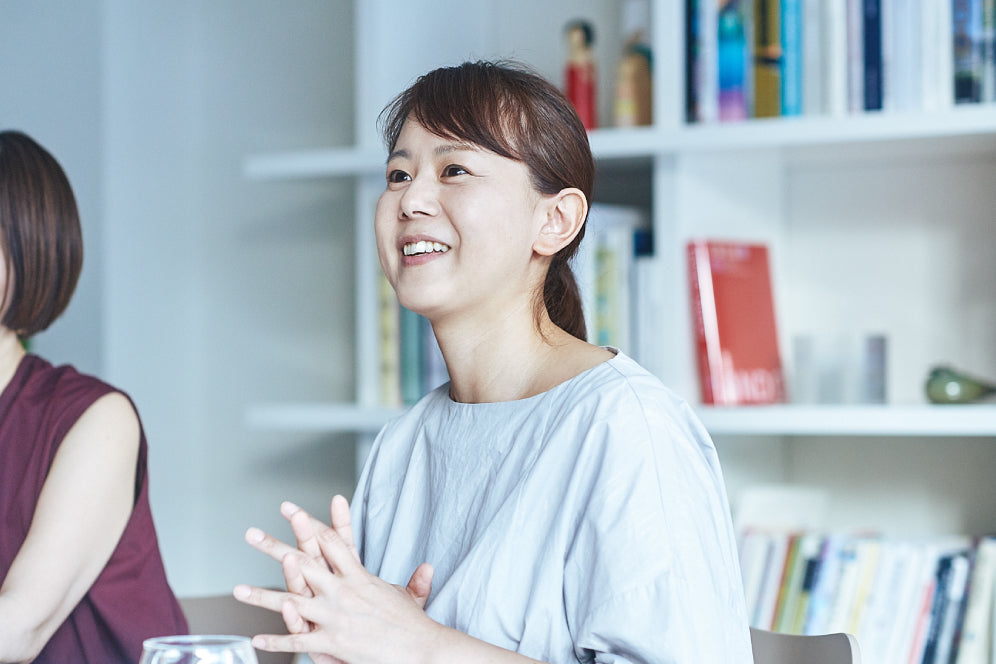
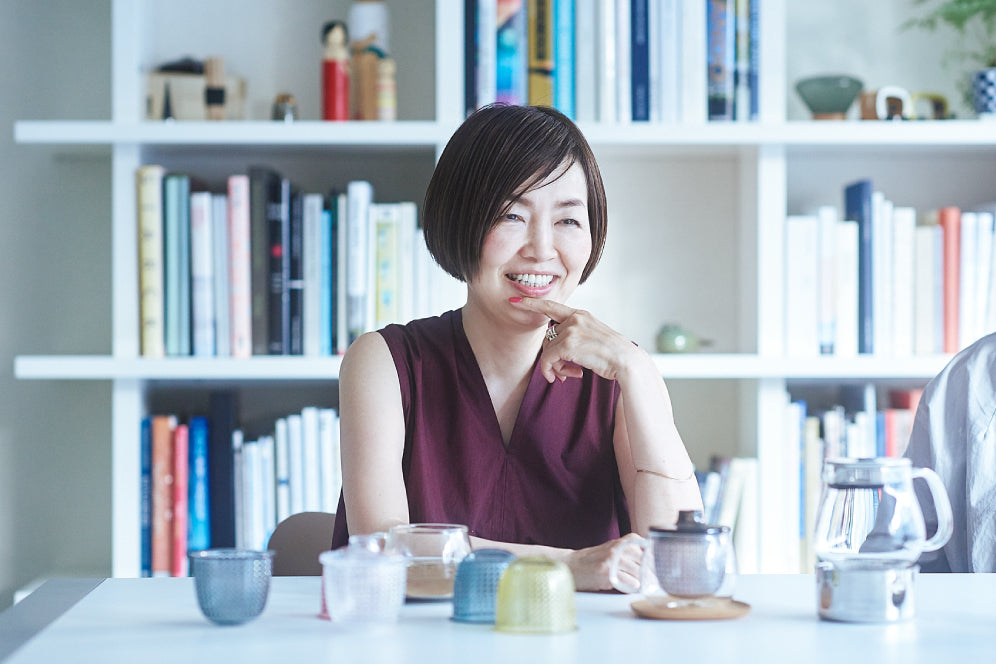
Fumie: It was around 2004 and I was teaching part-time at a design school, when one of my former students happened to join KINTO. I’m not sure if this was the reason, but a short while after that I was approached by KINTO to design a new kind of teaware in glass. It left an impression as taking hot beverages in a glass cup was rather unconventional in Japan. That made me think how nice it would be to create a glass tea set that anyone could use for their daily cup of tea.
Sayaka: When KINTO commissioned the design to Shibata-san, we proposed the style of kocha (individual tea), where each person takes their favorite tea in their favorite teaware. We thought it should be something comfortable for everyday use, something that is suitable for both men and women. And it should be versatile: the lids, strainers, and jugs would all have the same diameter so that you could mix and match the parts in different materials.
Fumie: That’s right. I started looking for a design that allowed for the parts to be swapped around systematically for a customized look, that was unisex, that was suitable for the every day. The key was the design of the “grip”. Glass teacups at the time were designed to be balanced daintily between your thumb, index and middle fingers, poising your other fingers in mid-air, but with UNITEA we made the handle larger so you could grasp it firmly with four fingers. By doing so we wanted the glass cup to be part of the fabric of everyday life, rather than it being something only for special occasions.
Sayaka: When KINTO commissioned the design to Shibata-san, we proposed the style of kocha (individual tea), where each person takes their favorite tea in their favorite teaware. We thought it should be something comfortable for everyday use, something that is suitable for both men and women. And it should be versatile: the lids, strainers, and jugs would all have the same diameter so that you could mix and match the parts in different materials.
Fumie: That’s right. I started looking for a design that allowed for the parts to be swapped around systematically for a customized look, that was unisex, that was suitable for the every day. The key was the design of the “grip”. Glass teacups at the time were designed to be balanced daintily between your thumb, index and middle fingers, poising your other fingers in mid-air, but with UNITEA we made the handle larger so you could grasp it firmly with four fingers. By doing so we wanted the glass cup to be part of the fabric of everyday life, rather than it being something only for special occasions.
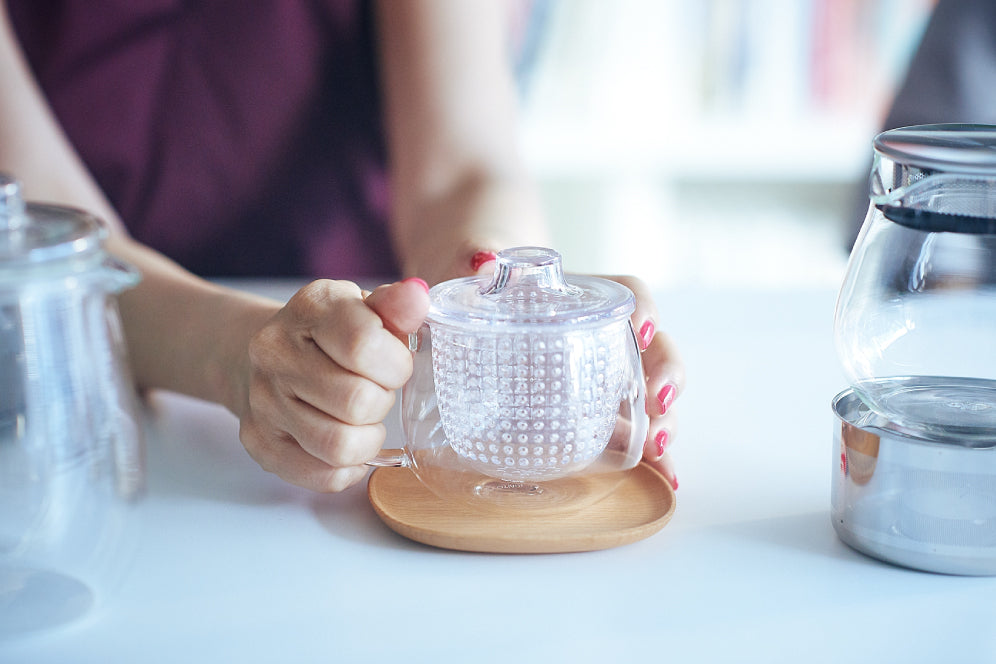
—What thoughts and aspirations did you have in designing UNITEA?
Fumie: Of course as a designer I always want my products to have a long and blessed life, but as we all know this is not something you can orchestrate. Although I have recently worked on daily objects such as knives, before UNITEA my experience was mostly with industrial designs like household electronics. KINTO’s UNITEA was the first product without any machinery inside where everything was down to the shape. In the beginning I was quite nervous thinking to myself, “if it doesn’t sell it must be the design!” But I had always been interested in designing everyday objects like tableware, so I was delighted when KINTO gave me the opportunity.
—What were the challenges you faced when coming up with this design?
Fumie: First, I tried to look for a motif with character that would work in different sizes. I considered angular, sharp lines, but drinking tea in a glass cup was a bit of a novelty in itself, and I feared the design would be too intimidating. I wanted something that felt friendlier and was easier to use – and came up with the pear-shaped motif. Different capacities could be created by changing the curvature, and the shape conveyed a sense of warmth. Would this create the uniform feel across products with different capacities and purposes? I tested my hypotheses one by one.
Fumie: Of course as a designer I always want my products to have a long and blessed life, but as we all know this is not something you can orchestrate. Although I have recently worked on daily objects such as knives, before UNITEA my experience was mostly with industrial designs like household electronics. KINTO’s UNITEA was the first product without any machinery inside where everything was down to the shape. In the beginning I was quite nervous thinking to myself, “if it doesn’t sell it must be the design!” But I had always been interested in designing everyday objects like tableware, so I was delighted when KINTO gave me the opportunity.
—What were the challenges you faced when coming up with this design?
Fumie: First, I tried to look for a motif with character that would work in different sizes. I considered angular, sharp lines, but drinking tea in a glass cup was a bit of a novelty in itself, and I feared the design would be too intimidating. I wanted something that felt friendlier and was easier to use – and came up with the pear-shaped motif. Different capacities could be created by changing the curvature, and the shape conveyed a sense of warmth. Would this create the uniform feel across products with different capacities and purposes? I tested my hypotheses one by one.
Evolution of UNITEA
ーAre there any improvements you made with the collection along the way?
Sayaka: We launched the first version of UNITEA in 2006, and in 2008 we reviewed the glass factory. We changed the teapot production line from a 100% hand-blown to a semi-automated process, which made the quality more consistent. In 2009, we altered the plastic strainer to a more heat-durable material. But we continued our quest to find the best material with both the ideal heat-resistance and clarity, and in 2012 it evolved into the current glass-like, yet easier-to-handle strainer.
Fumie: This plastic strainer has holes opened at equal intervals, and although I have been involved in many industrial designs there is no other product with an everyday price that offers such intricate manufacturing. To brew the perfect cup of tea, the hot water needs to circulate inside the strainer, and the tea must be diffused uniformly from small holes. Opening holes so evenly on a curved surface is no doubt a technical challenge. It was a casual suggestion, but when I saw the actual product I was very impressed.
Sayaka: In developing products we always try to maintain the overall balance between productivity, usability, and design. For UNITEA it was a process of trial and error with the manufacturer to bring Fumie’s design to life. The manufacturer proposed some alterations for efficient production, but we wanted to bring through the passion and logic behind the original design while still keeping an eye on the cost, so we could consistently produce quality products.
Sayaka: We launched the first version of UNITEA in 2006, and in 2008 we reviewed the glass factory. We changed the teapot production line from a 100% hand-blown to a semi-automated process, which made the quality more consistent. In 2009, we altered the plastic strainer to a more heat-durable material. But we continued our quest to find the best material with both the ideal heat-resistance and clarity, and in 2012 it evolved into the current glass-like, yet easier-to-handle strainer.
Fumie: This plastic strainer has holes opened at equal intervals, and although I have been involved in many industrial designs there is no other product with an everyday price that offers such intricate manufacturing. To brew the perfect cup of tea, the hot water needs to circulate inside the strainer, and the tea must be diffused uniformly from small holes. Opening holes so evenly on a curved surface is no doubt a technical challenge. It was a casual suggestion, but when I saw the actual product I was very impressed.
Sayaka: In developing products we always try to maintain the overall balance between productivity, usability, and design. For UNITEA it was a process of trial and error with the manufacturer to bring Fumie’s design to life. The manufacturer proposed some alterations for efficient production, but we wanted to bring through the passion and logic behind the original design while still keeping an eye on the cost, so we could consistently produce quality products.

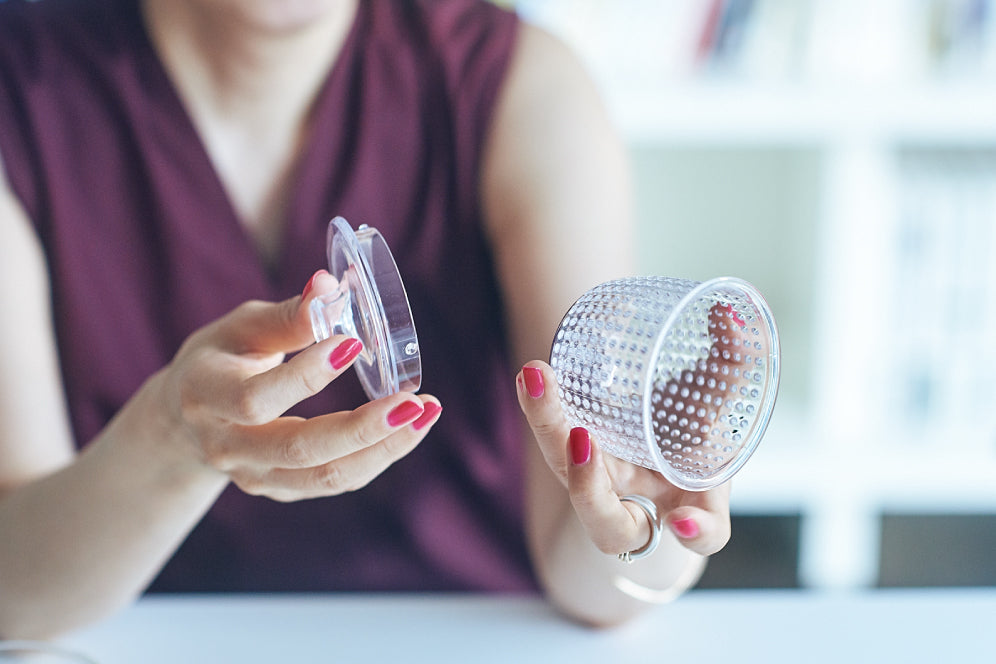
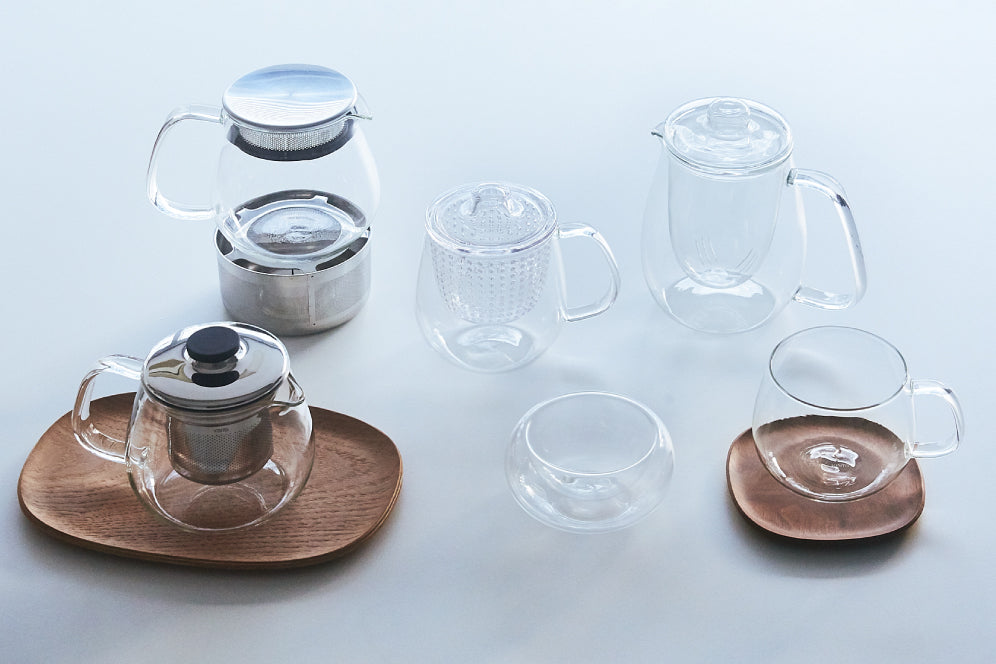
Sayaka: I think UNTEA’s appeal isn’t just the practicality of mixing and matching units, it’s also the variety of combination it offers, being able to appreciate the beauty of different materials like glass, stainless stee, plastic, and natural wood.
Fumie: UNITEA is very versatile. It embraces different sizes, materials, and colors. It’s fascinating, even though I designed it myself. We hadn’t considered such a wide range from the beginning, but as we nurtured the collection we discovered that more and more new ideas that just worked. To me this neutrality is also very UNITEA.
Fumie: UNITEA is very versatile. It embraces different sizes, materials, and colors. It’s fascinating, even though I designed it myself. We hadn’t considered such a wide range from the beginning, but as we nurtured the collection we discovered that more and more new ideas that just worked. To me this neutrality is also very UNITEA.
(Interviewer: Koji Kato)